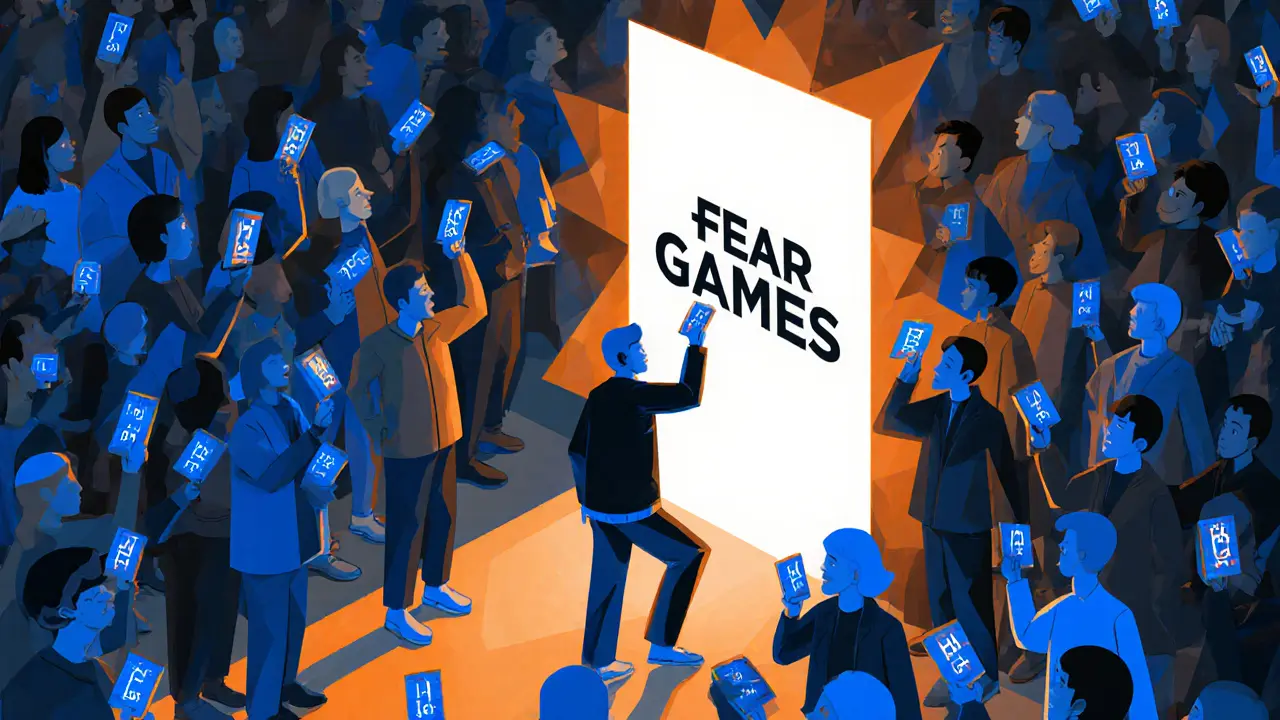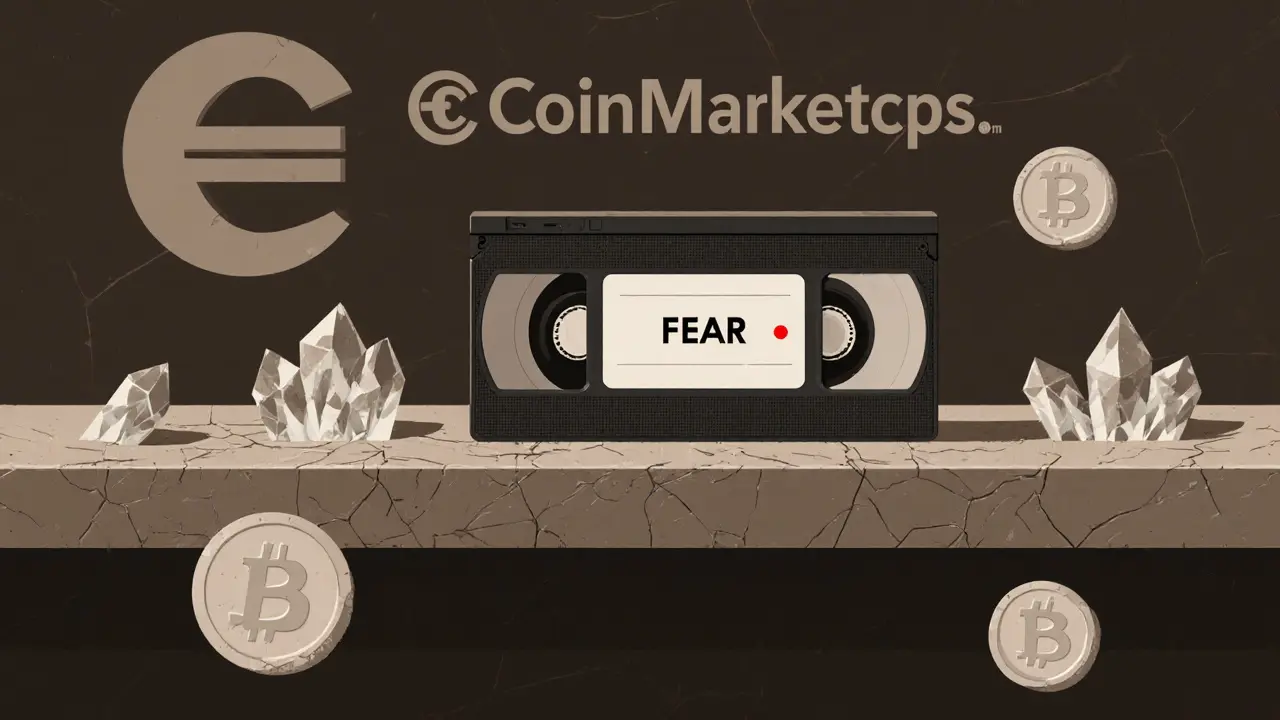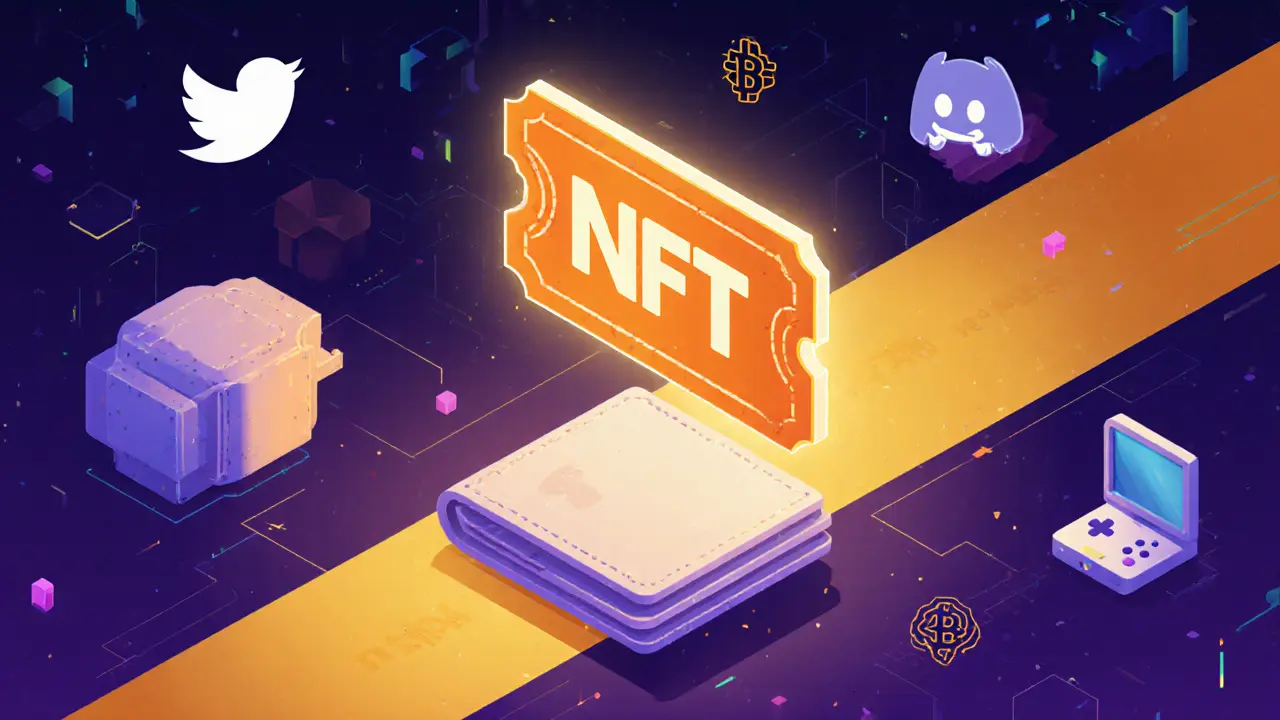Airdrop Legitimacy Checker
Evaluate airdrop opportunities using criteria from the FEAR NFT case study. Check the factors that determine if an airdrop is legitimate or vaporware.
Airdrop Assessment
Key Findings:
Back in 2021, FEAR NFT Games ran a pair of airdrops that caught the attention of Play-to-Earn gamers. The first one gave out 2,000 NFT tickets-each worth 25 FEAR tokens. That alone was enough to make some early participants feel like they’d hit the jackpot. But it wasn’t just a one-off. A bigger campaign followed: FEAR x CoinMarketCap, handing out 20,000 $FEAR tokens worth $30,000 at the time to over 500 winners. It was fast, it was simple, and for a while, it felt like the kind of opportunity that could change your crypto game.
How the FEAR Airdrop Actually Worked
The FEAR Play2Earn NFT tickets weren’t just free tokens thrown into the wind. They were digital passes tied to a game ecosystem that didn’t even exist yet. Each ticket was an NFT, meaning it was unique, blockchain-verified, and meant to unlock access to future games. The idea? Reward early believers with something tangible before the platform launched. You didn’t need to buy anything. You just had to sign up, connect your wallet, and follow a few steps on CoinMarketCap’s airdrop page. The process wasn’t complicated. Users had to:- Have a compatible crypto wallet (like MetaMask)
- Connect it to the CoinMarketCap airdrop portal
- Complete basic tasks: follow FEAR on Twitter, join their Discord, and sometimes retweet a post
- Wait for selection
Why the Airdrop Was a Big Deal at the Time
In 2021, Play-to-Earn was exploding. Axie Infinity was making headlines. CryptoKitties had already proven NFTs could be fun. But most games still required you to buy your way in-sometimes hundreds of dollars just to start playing. FEAR flipped that. Instead of asking for money, they asked for attention. They wanted to build a community, not just a wallet. The partnership with CoinMarketCap gave them instant credibility. CoinMarketCap wasn’t just a price tracker-it was the go-to hub for crypto newbies. If you were on there, you were likely someone who cared about tokens but hadn’t yet sunk money into risky projects. FEAR tapped into that exact group. And it worked. The first airdrop sold out fast. The second one drew thousands of entries. But here’s the catch: the tickets were never meant to be the endgame. They were a gateway. The real value was supposed to come from the games FEAR planned to build. And that’s where things started to unravel.What Happened After the Airdrop?
The FEAR NFT Games team raised $1.24 million across four funding rounds. That’s not small change. They had the money. They had the community. They had the timing. But after the airdrops ended in September 2021, silence followed. No game launch. No roadmap update. No new token listings. No major social media posts. The website stayed up, but it turned into a ghost town. The last update? A notice that read: “It looks like you are too late! The airdrop is closed.” That was it. People who claimed their tickets never got to use them. The promised Play-to-Earn games never materialized. Some holders tried to sell their NFT tickets on OpenSea or other marketplaces. A few sold for a few dollars. Most went unsold. Today, those tickets are worth close to zero-not because the blockchain erased them, but because the project behind them vanished. It wasn’t a scam in the traditional sense. No one stole your money. But it was a classic case of vaporware: hype built on promises that never came true. The airdrop wasn’t a scam-it was a missed opportunity.
Why FEAR Failed When Other Projects Succeeded
Compare FEAR to Axie Infinity. Axie didn’t just give away NFTs-they built a playable, addictive game with real economic loops. Players earned tokens by winning matches. Those tokens could be traded. That created a self-sustaining cycle. FEAR gave away tickets but never gave anyone a reason to play. Also, FEAR never clearly explained what the games would be. Was it an RPG? A shooter? A puzzle game? No details. No screenshots. No beta testers. No demo. Without that, the NFT tickets were just digital collectibles with no utility. And then there was the timing. Late 2021 was the peak of the crypto bull run. Everyone was chasing the next big airdrop. But when the market turned in 2022, projects without real products got left behind. FEAR had no product. So it got buried.What You Can Learn From the FEAR Airdrop
If you’re looking at airdrops today, the FEAR story is a warning label. Here’s what to check before you sign up:- Is there a working demo or playable version? If not, the project is still vaporware.
- Who’s behind it? Are the team members publicly known? Do they have track records?
- Is there a clear token use case? Are tokens used for gameplay, governance, or staking-or just speculation?
- Has it raised real funding? FEAR raised $1.24M. But raising money doesn’t mean building.
- Is the community active? A Discord with 10,000 members but only 50 active posts? Red flag.

Is There Any Way to Still Get FEAR Tokens?
No. The airdrops are permanently closed. The FEAR token is no longer listed on major exchanges. The official website hasn’t been updated since 2021. The Discord server is quiet. The Twitter account hasn’t posted since October 2021. If you see someone selling “FEAR tickets” today, they’re either selling dead NFTs or running a scam. The original tickets still exist on the blockchain-but they’re digital relics. Like a VHS tape of a movie that was never made.What’s the Legacy of FEAR’s Airdrop?
FEAR didn’t die because it was bad tech. It died because it was empty. It used the energy of the Play-to-Earn boom to grab attention, but never built anything lasting. It’s a reminder that in crypto, hype without substance doesn’t last. Other projects learned from this. Today’s successful Play-to-Earn games-like Pixels, Star Atlas, or Illuvium-focus on gameplay first, rewards second. They build worlds people want to live in, not just tokens they want to trade. FEAR’s airdrop wasn’t a failure because people didn’t join. It failed because no one stayed.Are FEAR Play2Earn NFT tickets still worth anything?
Technically, the NFT tickets still exist on the blockchain, but they have no utility or market value. No games were ever launched, so the tickets can’t be used. Most marketplaces show them as unsold or valued at less than $1. They’re digital artifacts now, not assets.
Can I still claim FEAR tokens from the airdrop?
No. The airdrop campaigns ended in September 2021. The official portals are offline, and the project has been inactive since then. Any website or service claiming to still distribute FEAR tokens is a scam.
Was the FEAR airdrop a scam?
It wasn’t a scam in the legal sense-no one stole your funds. But it was a classic case of vaporware. The team raised money, ran a successful airdrop, and then vanished without delivering the promised games. Many participants lost time and opportunity, which is just as damaging.
Why did FEAR NFT Games disappear?
The project likely ran out of direction. They raised $1.24 million but never built a playable game. Without user engagement or a working product, community interest faded. In 2022, the crypto market crashed, and projects without real utility were abandoned. FEAR had none.
Are there any similar airdrops still active today?
Yes. Projects like Pixels, Star Atlas, and Illuvium still run airdrops-but they’re tied to actual games. You can play them, earn tokens, and see your progress. Always look for live gameplay, active development updates, and transparent teams before joining any airdrop.

Hamish Britton
November 14, 2025 AT 12:11Man, I remember signing up for that FEAR airdrop. Thought I’d hit the lottery. Turned out my NFT ticket was just a digital ghost. No game, no updates, just silence. Classic case of ‘hype over substance.’ I’ve learned my lesson: if there’s no playable demo, I’m not wasting my wallet connect.
Hannah Kleyn
November 16, 2025 AT 09:54It’s wild how many projects did this back then. Everyone was chasing airdrops like they were free candy. But FEAR? They didn’t even give us a teaser. No screenshots, no gameplay clips, not even a vague roadmap. Just ‘trust us, it’s gonna be huge.’ And then… poof. I still have the NFT in my wallet. A museum piece now.
Rachel Anderson
November 18, 2025 AT 06:52Oh, FEAR. The project that dared to be *aesthetic* without substance. How tragically 2021. The NFT tickets weren’t just worthless-they were *symbolic* of the entire crypto delusion: the romanticization of ownership without utility. We were seduced by the *idea* of play-to-earn, not the *reality* of play. The blockchain preserved their existence, yes-but not their meaning. The true tragedy? We gave them our attention, our time, our digital signatures… and they gave us nothing but a blockchain artifact that hums with the silence of abandoned potential.
Andrew Parker
November 18, 2025 AT 19:53WHY DO WE KEEP FALLING FOR THIS?!?!? 😭 I mean, I’m not mad… I’m just… devastated. I believed. I believed in the dream. I connected my wallet. I followed the Discord. I retweeted. I thought I was part of something revolutionary. And then… crickets. The silence was louder than any token pump. I still check the website sometimes. Just… hoping. It’s not a scam. It’s a soul-crushing ghost story. 💔
Kevin Hayes
November 19, 2025 AT 06:15The real failure here wasn’t the lack of a product-it was the absence of accountability. FEAR raised $1.24M and vanished. No transparency, no explanation, no even a ‘we’re pivoting.’ In crypto, trust is the only currency that matters. Once it’s gone, the project is dead, regardless of how many NFTs exist on-chain. This isn’t about lost money. It’s about the erosion of community faith. And that’s harder to rebuild than any smart contract.
Katherine Wagner
November 21, 2025 AT 02:24So… it was vaporware? Or just bad timing? Or both? Or… is it just that no one cared enough to finish? I mean, I get it. But why did everyone act like it was a sure thing? And why do we still do this? 🤷♀️
ratheesh chandran
November 21, 2025 AT 20:23bro i was there too... i still have the nft... i check it every day like its my baby... but no game... no update... nothin... i think the team just took the money and ran... i feel like i wasted my time... but i still believe in p2e... just not like this...
Byron Kelleher
November 23, 2025 AT 05:51Hey, I know it sucks, but don’t let this kill your spirit. There are legit projects out there now-Pixels, Illuvium-they actually ship. FEAR was a lesson, not a life sentence. Keep an eye on teams with open GitHub repos, live dev logs, and real gameplay. You’ve got this. The next big thing is out there.
Vanshika Bahiya
November 24, 2025 AT 08:53For anyone new to airdrops: always check if the team has a public LinkedIn, past projects, or even a video call. FEAR had none. I’ve seen 100+ airdrops. The ones that last? They’re transparent, they update weekly, and they have a demo you can click on. FEAR? Zero. Don’t be the next person holding a digital tombstone.
Albert Melkonian
November 26, 2025 AT 03:30It is imperative to recognize that the collapse of FEAR NFT Games was not an isolated incident, but rather a symptom of a systemic issue within the decentralized finance ecosystem: the prioritization of speculative capital over sustainable development. The absence of a functional product, despite capital infusion, reflects a fundamental misalignment of incentives. One must approach future airdrops with rigorous due diligence, not optimism.
Kelly McSwiggan
November 26, 2025 AT 21:35Wow. A $1.24M vaporware project that didn’t even bother to fake a roadmap. How… quaint. I’m sure the team is sipping coconut water on a beach somewhere, laughing at our wallet connections. Next time, maybe don’t connect your wallet to a Twitter account that hasn’t posted since 2021. Just a thought.
Cherbey Gift
November 28, 2025 AT 02:16FEAR? More like FEAR of actually building something! 😂 They gave us tickets to a concert that never happened. We danced to the hype, but the band never showed. Now we got NFTs that glow in the dark… of our wallets. But hey, at least we got a story to tell our grandkids: ‘Back in the day, we believed in magic… and lost our time.’
Anthony Forsythe
November 28, 2025 AT 20:40There’s a metaphysical dimension to this, you know. The FEAR NFT tickets-those little digital ghosts-are not merely non-functional assets. They are mirrors. They reflect our collective yearning for meaning in a world of code and chaos. We didn’t lose tokens. We lost faith. We projected onto those NFTs our hopes for a decentralized utopia, and when the project vanished, it wasn’t just a company that disappeared-it was a dream we had dared to believe in. And that… that cuts deeper than any wallet drain.
Kandice Dondona
November 30, 2025 AT 06:19So sad… but also kinda funny? 😅 I still have my FEAR ticket in my wallet like a weird souvenir. Like a ticket to a theme park that shut down the day it opened. But hey-look at all the new projects that learned from this! ✨ I’m actually playing Pixels now and earning tokens while having fun. That’s the real win. Don’t let FEAR ruin your crypto joy! 🌈
Becky Shea Cafouros
December 2, 2025 AT 00:38They raised 1.24 million and didn’t even make a prototype? That’s not incompetence. That’s negligence. And the fact that people still talk about it like it’s some tragic myth? It’s embarrassing. Just move on.
Drew Monrad
December 2, 2025 AT 10:03Wait-so you’re telling me I spent hours filling out forms… for nothing? I’m not even mad. I’m… impressed. Like, how did they get so many people to believe in nothing? That’s some next-level psychology right there. I respect the hustle. I just wish I was on the other side.
Cody Leach
December 2, 2025 AT 17:29I still have the NFT. It’s in my collection. Not because I think it’s valuable. But because I want to remember what not to do next time. Lesson learned. No more airdrops without a demo link.
gary buena
December 2, 2025 AT 22:10lol i signed up for this too. i was so excited. then i saw the discord had 10k people and 3 messages a week. red flag? more like a neon sign. still got the nft though. it’s my ‘i believed in magic’ badge. 🤷♂️
sandeep honey
December 3, 2025 AT 01:15Why do people think airdrops are free money? They are free attention. FEAR got what they wanted: 20k wallets. The rest? Just noise. Next time, ask: who benefits? Not you. Always.
Robert Astel
December 4, 2025 AT 18:59you know what’s wild? i still check the website every once in a while… like maybe they’ll wake up one day and say ‘oops sorry we got distracted by nft monkeys’ and drop the game… i know it’s dumb… but i still hold out hope… like maybe the code is still there… buried in some server… waiting… like a digital sleeping beauty… and one day… the prince of community feedback will click ‘launch’… and we’ll all be like ‘ohhhh so THAT’S what they meant!’… and then we’ll all play… and earn… and cry… and laugh… and i’ll still have my ticket… not as a asset… but as a story… a weird little relic of the crypto wild west… where we believed… even when we shouldn’t have…